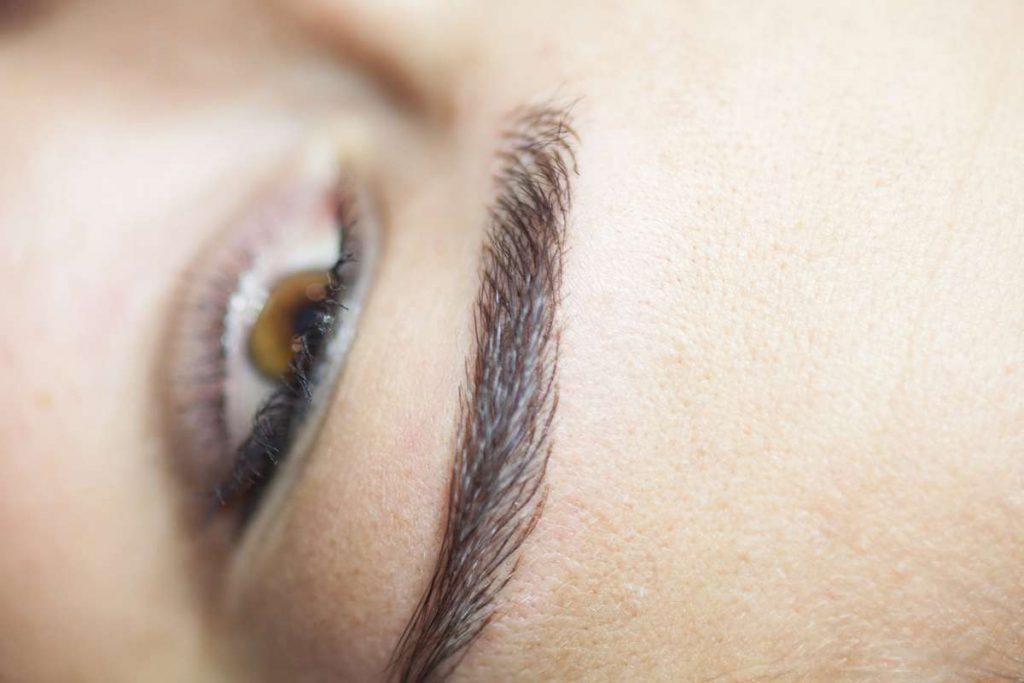Microblading is a semi-permanent cosmetic procedure that enhances the appearance of eyebrows by depositing pigment under the skin. While it delivers beautiful, natural-looking brows, many people are concerned about how painful the process might be.
In this article, we will discuss various aspects of the pain associated with microblading and provide answers under different headings for clarity.
Let’s get straight to the point
Microblading is a semi-permanent procedure for enhancing eyebrows, and while it can cause some discomfort, it’s generally well-tolerated. The pain feels like mild scratches, especially with the use of numbing creams.
Factors like pain tolerance, skin sensitivity, and anxiety can influence how it feels. Compared to traditional tattoos, microblading is less painful since it uses a manual blade and numbing agents.
Post-procedure soreness is similar to a mild sunburn, and proper aftercare minimises discomfort. Many find the temporary pain worth the long-lasting, natural-looking results that can last up to three years.
What Does Microblading Feel Like?
Microblading involves making tiny cuts on the skin where pigment is deposited. The sensation can be compared to small scratches or mild irritation.
Unlike traditional tattooing, which uses a machine, microblading is done manually with a hand-held tool that creates fine, hair-like strokes. The pain level depends largely on individual tolerance.
Some people describe it as uncomfortable but manageable, while others might experience more noticeable discomfort, especially those with sensitive skin.
- Feels like small scratches or mild irritation.
- Sensation can vary between individuals, depending on their pain tolerance.
- More tolerable than a traditional tattoo.
Pain Sensation During The Procedure
Although numbing cream helps, some discomfort may still occur. As the microblading tool moves across your skin, you might hear a scraping or crunching noise, similar to footsteps on packed snow. This sound is often unsettling for some clients, though it is harmless.
During the procedure, you might feel some pressure or minor irritation. If the numbing cream wears off before the procedure is complete, additional numbing cream can be applied.
Factors That Influence Pain Levels
Pain tolerance varies from person to person, and there are other factors that can influence how painful microblading may feel:
- Pain Tolerance: People with a low pain threshold might find the experience more uncomfortable.
- Skin Sensitivity: Individuals with more sensitive skin may experience increased discomfort, while those with thicker skin may feel less.
- Menstrual Cycle: For women, pain sensitivity can increase during menstruation.
- Anxiety and Stress: Feeling nervous or tense during the procedure can amplify the sensation of pain.
These factors highlight why some individuals report very little pain, while others find the experience more uncomfortable.
The Role Of Numbing Creams In Reducing Pain
One of the key aspects that make microblading less painful than traditional tattooing is the use of numbing creams. Before starting the procedure, most practitioners apply a topical numbing agent to the eyebrow area.
This numbing cream takes about 30 minutes to become effective and significantly reduces the pain by desensitising the skin. You won’t feel the cuts directly, but rather the pressure of the tool or a mild scratching sensation.
If you have concerns about pain, communicate with your technician so they can apply more cream if needed during the process.
Pain After Microblading: What To Expect
After the procedure, your brows might feel tender and slightly sore, similar to a mild sunburn. Some redness and swelling are normal during the healing process, which lasts about 10 to 14 days.
During this period, you may experience some skin flaking and scabbing, which can cause minor discomfort. Following aftercare instructions provided by your practitioner is essential.
Proper aftercare helps reduce the risk of infection and minimises any prolonged pain or discomfort.
Tips To Minimise Pain During And After Microblading
If you’re concerned about the pain of microblading, there are steps you can take to help reduce discomfort:
- Avoid caffeine and alcohol before your appointment, as these can increase skin sensitivity.
- Stop using vitamin A (retinol) products at least one month before the procedure, as these can make your skin more sensitive.
- Avoid waxing or plucking your brows for a few days before the procedure to reduce irritation.
- Limit sun exposure before and after the appointment to prevent skin sensitivity.
- Ask your technician to reapply numbing cream if needed during the procedure.
Is the Pain Of Microblading Worth It?
While microblading may cause some discomfort, the long-lasting results often outweigh the temporary pain. Many people appreciate the convenience of having fuller, well-shaped eyebrows without the daily need for brow pencils or gels.
Microblading can save time and effort, making it an attractive option for those looking to enhance their natural brows. With regular touch-ups every 12 to 18 months, the results can last up to three years, making the short-term discomfort worthwhile for most clients.
Conclusion
While microblading can cause some discomfort, it is generally well-tolerated by most people, especially with the use of numbing creams. The sensation often feels like mild scratching or irritation, and factors like individual pain tolerance, skin sensitivity, and anxiety can influence the experience.
However, compared to traditional tattooing, microblading is considered much less painful due to the use of manual tools and the application of topical anesthetics. Post-procedure tenderness is usually minimal and manageable with proper aftercare, and the long-lasting, natural-looking results often outweigh the temporary discomfort.
By choosing an experienced practitioner and following recommended guidelines, you can ensure a more comfortable experience and enjoy beautifully enhanced brows for years to come.
FAQs About Microblading
How Painful Is Microblading?
Microblading discomfort varies by person, but most describe it as a mild, tolerable sensation similar to light scratching. Numbing cream is often applied to reduce pain.
Does Numbing Cream Completely Eliminate Microblading Pain?
Numbing cream minimizes the pain but doesn’t completely eliminate all sensation. It significantly dulls the discomfort, making the process more comfortable for most clients.
How Long Does The Pain Last After Microblading?
Mild tenderness or discomfort may last a few hours after the procedure, but it typically subsides quickly. Any sensitivity usually resolves within a day or two.
Can I Take Painkillers Before Microblading?
It’s best to avoid taking blood-thinning medications like aspirin or ibuprofen before the procedure, as they can increase bleeding. Consult your technician for safe options.
Is Microblading More Painful Than A Regular Tattoo?
Microblading is generally less painful than a traditional tattoo because it only penetrates the superficial layers of the skin, while tattoos go deeper.



